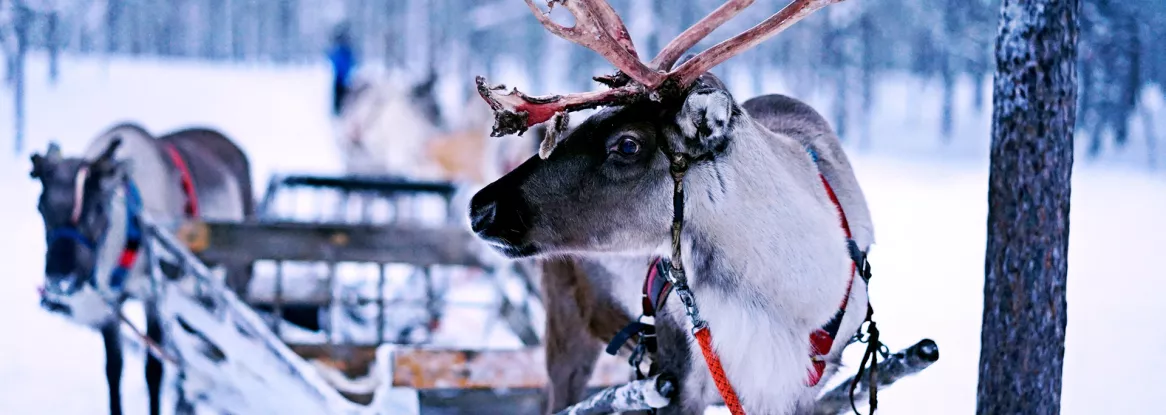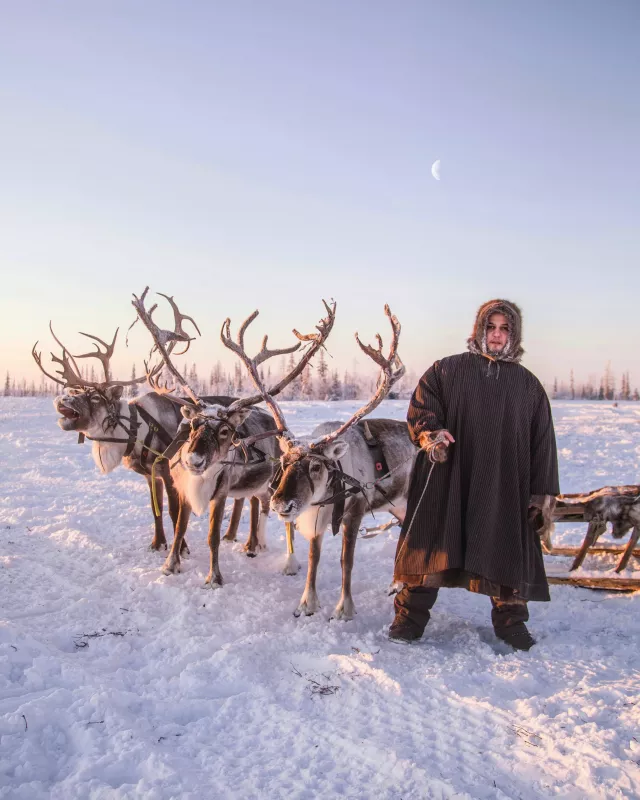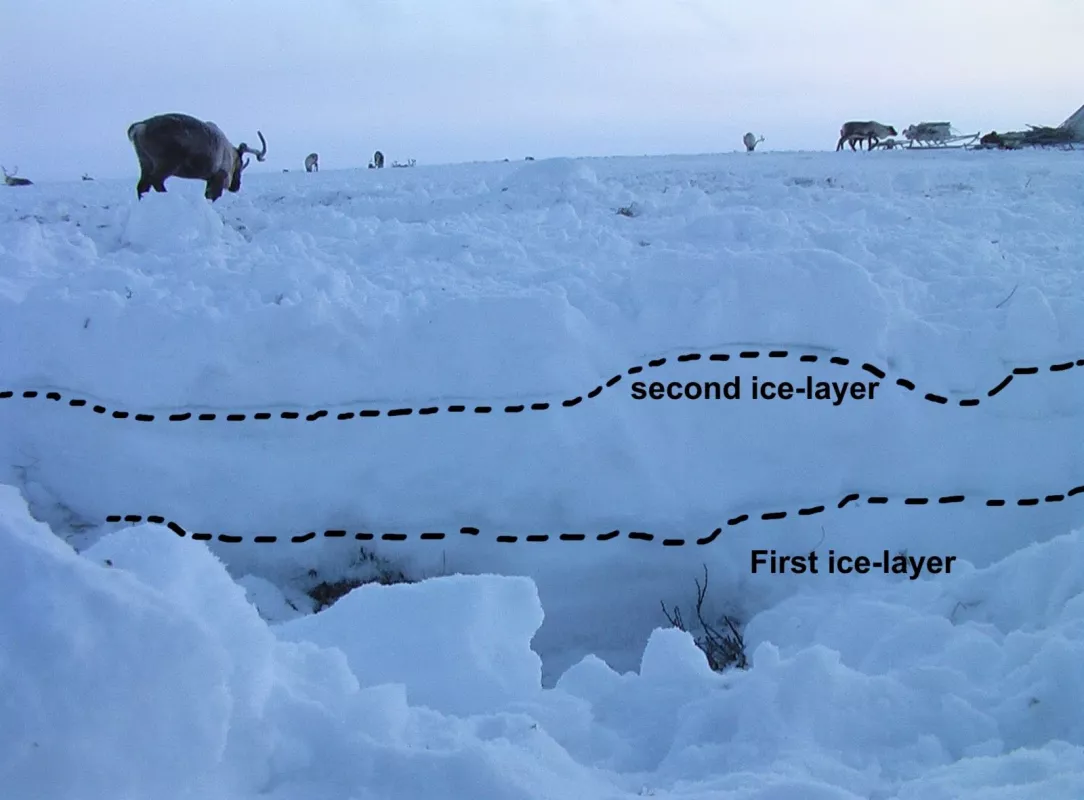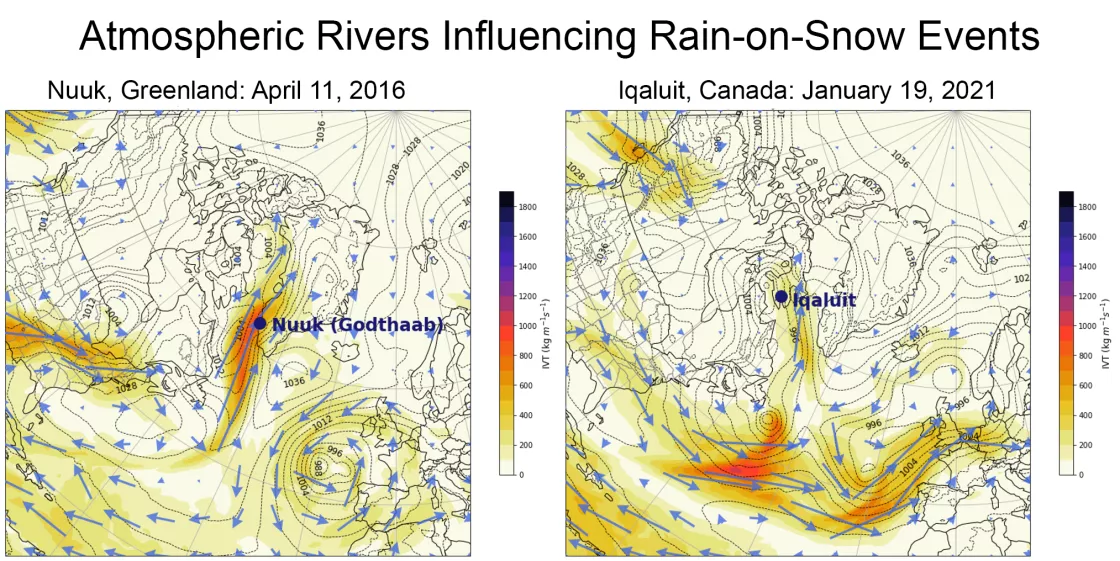By Agnieszka Gautier
Helicopters hover over the Norwegian tundra. The pilots, scanning the landscape, find their targets and drop their payload. But this is no military mission; these intrepid aviators are out delivering food to the Arctic region’s starving reindeer herds.
The mission, with the help of five helicopters, entails dropping over 250,000 kilograms (250 tons) of feed to over 20 herding sites in Finnmark, Norway, the northernmost part of continental Europe. One flight, however, can only transport one bag with 800 kilograms (1,764 pounds) of fodder, meaning pilots must take over 300 collective trips to transport the much-needed feed.
This rescue effort, while costly and time consuming, saved as many as 160,000 reindeer from starvation in the spring of 2020. Desperate missions like these may become more necessary in the coming years because climate change amplifies a weather phenomenon known as rain on snow. In a rapidly warming Arctic, increased rainfall creates thick layers of ice in the snowpack that shuts reindeer off from food, further impacting the communities that depend on them.
From 2020 to 2024, the Arctic Rain on Snow Study (AROSS) at the National Snow and Ice Data Center (NSIDC) hopes to quantify and better understand rain on snow and its impacts. With support from the National Science Foundation, this international, interdisciplinary research team studies these events to help mitigate the impacts on Arctic ecosystems and communities.
The dark side of Arctic rain
Without extra food, or other means of intervention, the consequences of rain on snow to reindeer herds can be dire. In the winter of 2021, about 80,000 reindeer starved in northern Russia when a thick layer of ice coated the Yamal tundra. Not even a decade earlier, in 2013, over 60,000 reindeer died in the same manner in the same region. The Arctic is changing, warming two to three times the rate of global average temperatures. In 2020, Russian Arctic territories had temperatures that were 7 degrees Celsius (13 degrees Fahrenheit) above average.
Higher temperatures increase the likelihood of more rain in the Arctic. Reindeer and wildlife might not be able to adapt to such a rapidly changing ecosystem. When rain falls on snow and refreezes, a hard icy crust forms that blocks reindeer, caribou, muskoxen, and other animals from life-sustaining forage during winter. As an insulator, snow preserves herbs, lichen, and grasses beneath its blanket, but when the hooves of these animals cannot crack the ice crust, they starve. The impacts can also linger as generations suffer declining health and reproduction. “It’s not just a problem for the reindeer, caribou, and musk ox, but for the peoples of the north that depend on them as well," said Mark Serreze, the project lead of AROSS. Over 20 different Indigenous Peoples in the Arctic rely on reindeer for their livelihood.
Climate-related effects like more rain on snow can disrupt centuries’ worth of reindeer husbandry practices in regions like the Yamal Peninsula in Russia or Lapland, Finland. Working with these communities is an essential part of the AROSS mission because these local observers can place rain-on-snow events in context and reveal broader impacts. Reindeer herding has been a way of life for Indigenous Peoples for generations. The reindeer provide food, clothing, income, and, for some, transportation. Trouble for reindeer means trouble for entire communities, extending beyond the immediate impact year.
Challenges in the AROSS project
As a large part of this study involves working with communities, access is key, but unforeseen events rocked the study’s first two years. One region in Alaska has been inundated with research projects and is experiencing research fatigue. So, the team has had to step back there. The global coronavirus pandemic, which began in 2019, stalled travel to Alaska, Scandinavia, and the Yamal Peninsula in Russia. “This was a new challenge and something we had no control over,” Serreze said.
Building relationships requires time, traveling, developing trust, and bringing local collaborators to the universities that are part of the project. But on February 24, 2022, Russia launched a full-scale invasion of Ukraine, with the political fallout creating another barrier to research in Russia. “These disturbances have been very substantial as we try to formulate partnerships and engage these communities in the right way,” said Matthew Druckenmiller, an NSIDC researcher on the AROSS team.
The international team of AROSS researchers from Canada, Finland, Russia, and the United States want their science to have applicable meaning. That requires reaching out to those that are affected the most. Learning how communities observe rain-on-snow events and their impacts can inform how scientists monitor these events, collect data, and decipher which scientific products could be useful to communities.
A recalibration for research
Luckily, as some doors closed, others opened. Considerable information already existed about rain-on-snow events and their impacts on communities via historical interviews with reindeer herders and long-term observation programs in Alaska. The team began to establish a foundation by sorting through existing information. “In general, it is good to do your homework if you’re a researcher who wants to work with communities,” Druckenmiller said.
As the team dove deeper into what has been happening in the Arctic, they realized that their scope was limited. Rain on snow can impact snow stability, triggering avalanches. It is rain that freezes on infrastructure, power lines, runways, and water systems that communities rely on. When rain falls on rivers during the early stages of freeze up, it can lead to overflow issues or early break up, impacting the way communities use waterways as transportation corridors. “We knew this early on, but it has become a lot more obvious that to really engage with communities about topics they care about, we need to broaden our views beyond just rain falling on snow,” Druckenmiller said.
Eventually, the AROSS team would like to investigate whether there is a connection between past notable rain-on-snow years as identified by satellite remote sensing and Indigenous Elders knowledge and memory of past impacts. “That is how you tell the story—by getting evidence from different sources,” Druckenmiller said. “That’s ultimately what you’re trying to do in a large project like this.” Since AROSS is part of a larger NSF initiative, Navigating the New Arctic (NNA), this holistic perspective of trying to understand how the Arctic is changing, meets the goals for integrated and collaborative research to study how “natural, human-built, and social systems affect Arctic change and how a changing Arctic will affect local and global systems.”
Let’s get physical: rain on snow processes
From foundational work, the international team then shifted their vantage to the physical side, the meteorological process, of how rain-on-snow events form. A strong relationship has been identified between ROS events and atmospheric rivers, narrow bands of strong moisture that carry more water in time than the Mississippi River. “This is really opening up a whole new area of understanding with these events,” Serreze said. Unusual circulation patterns give rise to these ROS events. Though linkages exist, the researchers are still aware that every event is unique in terms of development.
The team has also found that earlier than previously predicted, more rain than snow will fall in the Arctic in the coming decades. A transition from a snow-dominated to a rain-dominated Arctic in the autumn could happen as early as 2050. As part of the AROSS study, Canadian team members led the paper on improved climate models that reveal faster and larger increases in Arctic rainfall. The model uses improved simulations of sea ice cover and historical snow cover, improving precipitation forecasts for the Arctic. Even under a 1.5-degree-Celsius (2.7-degree-Fahrenheit) increase, pronounced change may unfold.
As noted earlier, more rain on snow has ramifications beyond forming a thick, hard crust of ice. “Every time we look deeper and closer at what is happening in the Arctic, we find that the impacts are stronger and worse than we thought,” Serreze said. For instance, rain on snow impacts permafrost temperatures. When rain falls on snowpack, water percolates down, warming the permafrost. When it refreezes, a big release of heat occurs. When microbes in thawing permafrost become active, they release the mega heat-insulating carbon bomb called methane.
Essentially, rain on snow is part of something much bigger—a radical change in the Arctic region. “This is becoming a global issue,” Serreze said. For instance, could rapid Arctic warming—knowns as Arctic Amplification—influence weather in the mid-latitudes like snowstorms? “The jury is still out there, and this remains highly controversial,” Serreze said. “We will see what comes of that, but the potential relationship between the Arctic and mid-latitudes shows the importance of why change in the Arctic matters to the rest of the planet.”
The National Science Foundation (NSF) Grant Navigating the New Arctic (NNA) 198230 funds the Arctic Rain on Snow Study (AROSS) at NSIDC.



